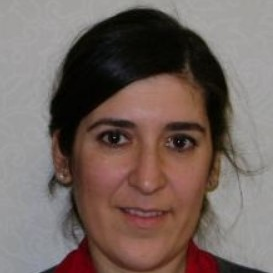Exercise and Sports Cardiology
A special issue of Journal of Clinical Medicine (ISSN 2077-0383). This special issue belongs to the section "Cardiology".
Deadline for manuscript submissions: 25 July 2024 | Viewed by 11352
Special Issue Editor
2. Department of Clinical, Special and Dental Sciences, University Hospital "Umberto I-Lancisi-Salesi", Marche Polytechnic University, 60126 Ancona, Italy
Interests: cardiac arrhythmia; atrial fibrillation
Special Issue Information
Dear Colleagues,
In recent years, there has been a growing awareness that physical sports activity is essential to achieve a state of mental and physical well-being, to prevent major chronic diseases, and to counteract aging processes. In this scenario, cardiology plays a primary role, and its fields of application are many: cardiovascular assessment in the healthy patient or in the patient with chronic diseases; the effect of training on the cardiovascular system (consider the so-called athlete's heart); the prevention and treatment of sudden cardiac death related to physical exertion, etc. In addition, there are many points of contact with emerging fields of medicine such as genetics, epigenetics, gender medicine and, finally, artificial intelligence.
This Special Issue (SI) of the Journal of Clinical Medicine, entitled “Exercise and Sports Cardiology”, focuses on the most clinically innovative advances and applications in imaging, interventional cardiology, rehabilitation, and basic research that address the complex relationship between cardiology and sports physical activity. The goal is to publish ground-breaking research articles of significant clinical and scientific value, including observational studies, clinical trials, and review articles. Unique clinical cases, particularly supported by advanced imaging, will also be welcome.
We anticipate that the success of exercise and sports cardiology will lead to the publication of other SI in different cardiology subspecialties.
Dr. Michela Casella
Guest Editor
Manuscript Submission Information
Manuscripts should be submitted online at www.mdpi.com by registering and logging in to this website. Once you are registered, click here to go to the submission form. Manuscripts can be submitted until the deadline. All submissions that pass pre-check are peer-reviewed. Accepted papers will be published continuously in the journal (as soon as accepted) and will be listed together on the special issue website. Research articles, review articles as well as short communications are invited. For planned papers, a title and short abstract (about 100 words) can be sent to the Editorial Office for announcement on this website.
Submitted manuscripts should not have been published previously, nor be under consideration for publication elsewhere (except conference proceedings papers). All manuscripts are thoroughly refereed through a single-blind peer-review process. A guide for authors and other relevant information for submission of manuscripts is available on the Instructions for Authors page. Journal of Clinical Medicine is an international peer-reviewed open access semimonthly journal published by MDPI.
Please visit the Instructions for Authors page before submitting a manuscript. The Article Processing Charge (APC) for publication in this open access journal is 2600 CHF (Swiss Francs). Submitted papers should be well formatted and use good English. Authors may use MDPI's English editing service prior to publication or during author revisions.
Keywords
- cardiology research
- cardiovascular disease
- sudden cardiac death
- coronary artery disease
- myocardial disease
- heart failure
- preventive cardiology
- ventricular arrhythmias
- cardiac imaging
- physical activity
- sports eligibility assessment
- atherosclerosis






